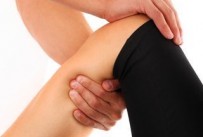After rehab ends, the work keeps going

After rehab ends, the work keeps going
Written by: Paul Kochoa, PT, DPT, OCS, CKTP, CGFI
After an injury or a surgery, physiotherapy is usually prescribed for athletes or weekend warriors. Exercise and rehabilitation can get you back into the swing of things, but a big part of the work relies on you, the patient.
During a patient’s time in rehab, the patient will probably get exercises and drills to do at home or at work. But after discharge from physiotherapy, it’s still very important to continue to exercise. Generally one may see a vast improvement in movement and strength while attending physiotherapy. But athletes, especially post-surgery, tend to continue with making gains and improving up to a year after surgery. So progressing the exercise program independently is the key to achieving all the long term goals and decreasing the chance of re-injury.
Whatever your case may be, there’s always a few principles to keep in mind as you go and perform your exercise routine: remember the instructions your doctor gave you after surgery, maintain your mobility, return to activity slowly, and cool down.
Depending on the surgery, the surgeon may place certain restrictions on the joint or body part in terms of getting back into sports activity. For example, a patient after hip replacement surgery that can’t bend down to touch their toes. The surgeon limits the movement because they want the surgery to work and heal, and the joint to be preserved over time. Know your doctor prescribed precautions.
Maintain your mobility by stretching. Remember a warm body part stretches more than a cold one, so get out your heating pads or, better yet, start your exercise routine with light cardio exercise and dynamic movements. Mobilization is easy to lose and harder to improve.
Remember to progress your program slowly, don’t overdo it. For runner’s getting back from an injury, I generally tell them to avoid progressing time or distance more than 10% per week. Build up your tolerance to the activity level it was prior to surgery and listen to your body.
And finally, cooling down allows the body to return to its normal homeostatic levels. You can restore normal circulation and heart rate and breathing rates while you cool down. You can also do a stretching and mobilization program while you’re cooling down.
All these points are generally good to follow when your going out on your own after rehab ends, but this list is not all-inclusive. Every case and every athlete is different, so consult your physiotherapist for further information, please call Professional Physical Therapy and Training at 973-270-7417. Our offices are located within the YMCA locations in Madison and Summit, NJ. You do not need to be a member of the YMCA to visit with us.
